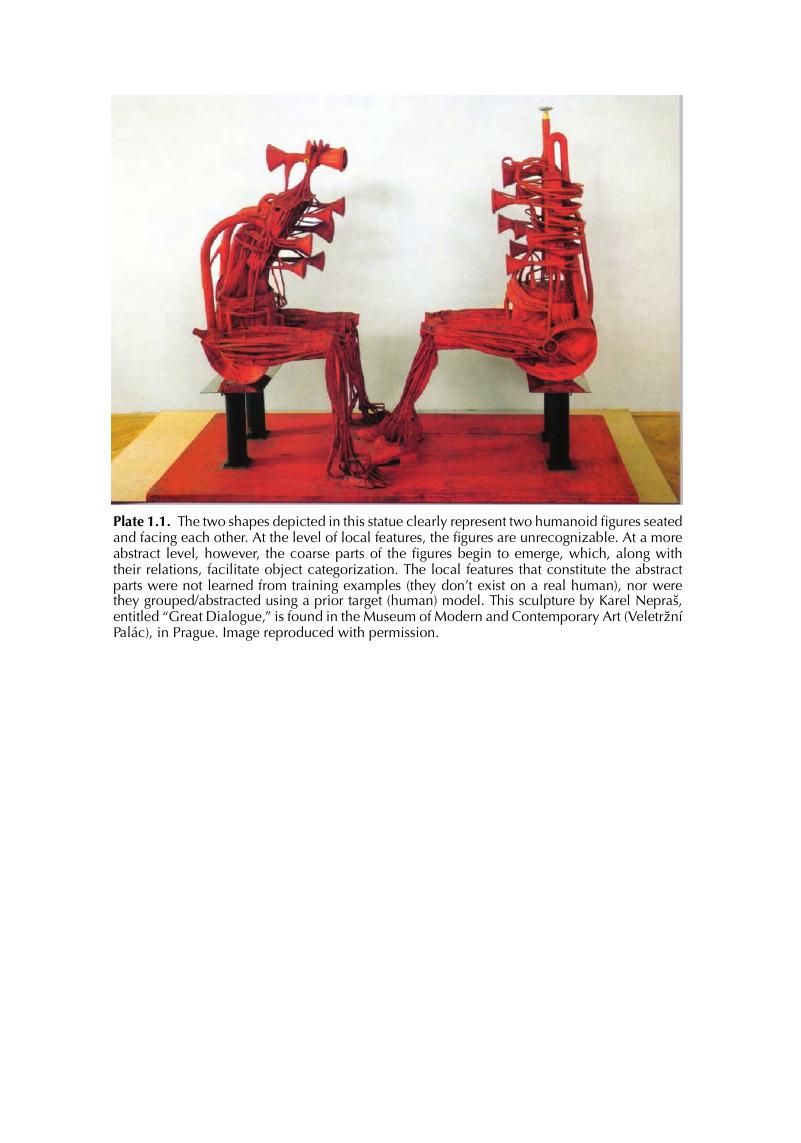Book contents
- Frontmatter
- Contents
- Preface
- Contributors
- 1 The Evolution of Object Categorization and the Challenge of Image Abstraction
- 2 A Strategy for Understanding How the Brain Accomplishes Object Recognition
- 3 Visual Recognition Circa 2008
- 4 On What It Means to See, and WhatWe Can Do About It
- 5 Generic Object Recognition by Inference of 3-D Volumetric Parts
- 6 What Has fMRI Taught Us About Object Recognition?
- 7 Object Recognition Through Reasoning About Functionality: A Survey of Related Work
- 8 The Interface Theory of Perception: Natural Selection Drives True Perception to Swift Extinction
- 9 Words and Pictures: Categories, Modifiers, Depiction, and Iconography
- 10 Structural Representation of Object Shape in the Brain
- 11 Learning Hierarchical Compositional Representations of Object Structure
- 12 Object Categorization in Man, Monkey, and Machine: Some Answers and Some Open Questions
- 13 Learning Compositional Models for Object Categories from Small Sample Sets
- 14 The Neurophysiology and Computational Mechanisms of Object Representation
- 15 From Classification to Full Object Interpretation
- 16 Visual Object Discovery
- 17 Towards Integration of Different Paradigms in Modeling, Representation, and Learning of Visual Categories
- 18 Acquisition and Disruption of Category Specificity in the Ventral Visual Stream: The Case of Late Developing and Vulnerable Face-Related Cortex
- 19 Using Simple Features and Relations
- 20 The Proactive Brain: Using Memory-Based Predictions in Visual Recognition
- 21 Spatial Pyramid Matching
- 22 Visual Learning for Optimal Decisions in the Human Brain
- 23 Shapes and Shock Graphs: From Segmented Shapes to Shapes Embedded in Images
- 24 Neural Encoding of Scene Statistics for Surface and Object Inference
- 25 Medial Models for Vision
- 26 Multimodal Categorization
- 27 Comparing 2-D Images of 3-D Objects
- Index
- Plate section
Plate section
Published online by Cambridge University Press: 20 May 2010
- Frontmatter
- Contents
- Preface
- Contributors
- 1 The Evolution of Object Categorization and the Challenge of Image Abstraction
- 2 A Strategy for Understanding How the Brain Accomplishes Object Recognition
- 3 Visual Recognition Circa 2008
- 4 On What It Means to See, and WhatWe Can Do About It
- 5 Generic Object Recognition by Inference of 3-D Volumetric Parts
- 6 What Has fMRI Taught Us About Object Recognition?
- 7 Object Recognition Through Reasoning About Functionality: A Survey of Related Work
- 8 The Interface Theory of Perception: Natural Selection Drives True Perception to Swift Extinction
- 9 Words and Pictures: Categories, Modifiers, Depiction, and Iconography
- 10 Structural Representation of Object Shape in the Brain
- 11 Learning Hierarchical Compositional Representations of Object Structure
- 12 Object Categorization in Man, Monkey, and Machine: Some Answers and Some Open Questions
- 13 Learning Compositional Models for Object Categories from Small Sample Sets
- 14 The Neurophysiology and Computational Mechanisms of Object Representation
- 15 From Classification to Full Object Interpretation
- 16 Visual Object Discovery
- 17 Towards Integration of Different Paradigms in Modeling, Representation, and Learning of Visual Categories
- 18 Acquisition and Disruption of Category Specificity in the Ventral Visual Stream: The Case of Late Developing and Vulnerable Face-Related Cortex
- 19 Using Simple Features and Relations
- 20 The Proactive Brain: Using Memory-Based Predictions in Visual Recognition
- 21 Spatial Pyramid Matching
- 22 Visual Learning for Optimal Decisions in the Human Brain
- 23 Shapes and Shock Graphs: From Segmented Shapes to Shapes Embedded in Images
- 24 Neural Encoding of Scene Statistics for Surface and Object Inference
- 25 Medial Models for Vision
- 26 Multimodal Categorization
- 27 Comparing 2-D Images of 3-D Objects
- Index
- Plate section
Summary

- Type
- Chapter
- Information
- Object CategorizationComputer and Human Vision PerspectivesPublisher: Cambridge University PressPrint publication year: 2009

